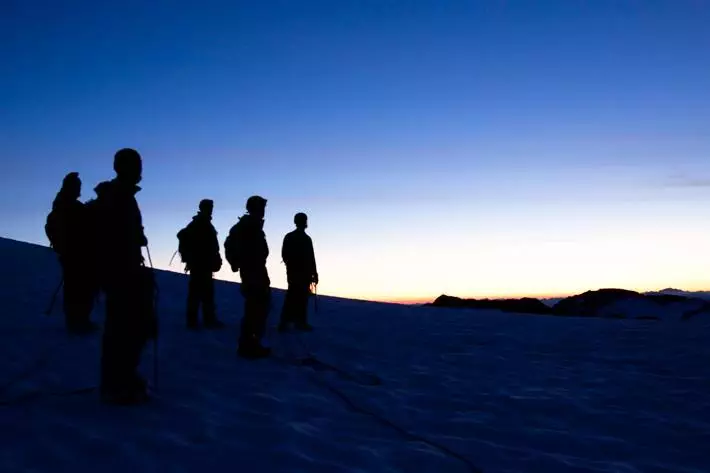The art of outdoor photography may have been appropriated by Instagram, smartphones and an endless competition for likes, but coming home from a trip with quality images is still one of the rewarding experiences of spending time in the mountains. Digital photography is within everyone’s reach these days with image sensors in phones having the same pixel count as many Digital Single Lens Reflex (DSLR) cameras did just a few short years ago. Yet despite all the technological advances with these devices, good photos still require a good photographer. In order to help you come home with the best (and most ‘grammable) images possible, here’s a rundown on taking better photos in the backcountry.
Framing and Composition
This is probably the most important aspect of photography. In the context of backcountry, the subject (ie your ski touring partner) shouldn’t be the only thing of importance in the image. Look for patterns, symmetry and textures in the rest of the frame and adjust your angle accordingly. Sometimes it can be as simple as a track in the snow or a late afternoon shadow creeping across a glacier. Experiment with different styles and you’ll start to see what works. Don’t forget the all-important (but not gospel) rule of thirds.
View this post on InstagramA post shared by Guy Fattal Photography (@guyfattalphoto) on
Capture the Action
When shooting action i.e. when the skier is moving downhill or making a turn at speed, you can either use a “rapid fire” setting (camera shutter fires several frames per second and you choose the best one, phones now have this function too) or do it the old fashioned way by timing a single frame just right. The latter takes practice, but is easier to execute when you have a bit of distance between you and the subject and they’re not taking up a significant part of the photo’s frame. Always give your skier “somewhere to go” by framing a part of the slope below them. If shooting on manual settings, the rule of thumb for capturing sharp action shots is a shutter speed of 1/1000.
View this post on InstagramA post shared by Vince Shuley (@whis_vince) on
Communication is Key
If you want to get the shot right, the subject (ie the skier) and the photographer need to be on the same page. That means discussing the timing, framing and intended ski path before dropping in. The old adage of “did you say no, or did you say go?” was born from unclear words getting yelled up and down slopes. Figure out a system. Don’t rush either party. And if shooting over longer distances, invest in a set of 2-way radios. That way everyone can be clear on how the shot is going to work.
View this post on InstagramI like my frost crystals like I like my marmots: hoary.
A post shared by Jeff Slack (@mtn_nerd) on
Make the light work for you
Light is the foundation of all imagery, but not all great photos are taken with cloudless skies. Shadows, contrasts and textures (see aforementioned Framing and Composition) can turn a dull, middle grey shot into a monochrome masterpiece. Post processing with a program such as Lightroom will let you boost contrasts and adjust exposure slightly to make shades and textures pop a bit more. Careful not to overdo it; there’s nothing worse than an oversaturated photo that looks like its hemorrhaging colour.
Don’t over-complicate your photos in the backcountry
If you’re learning to paint, don’t start with a Picasso. The same goes for photography. Too often shots with good potential are blown due to the photographer trying to execute a photo with too many variables. Dial in the easy stuff first such as landscapes and skinning, then work your way up to the more complicated stuff.
Taking photos in the backcountry is an open-ended artform, so be ready to learn something new every time you venture out with a camera. It only gets better with practice.
Written by: Vince Shuley

